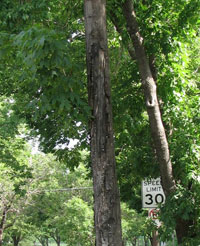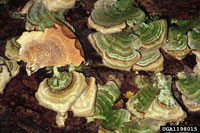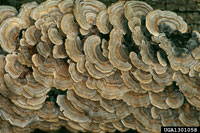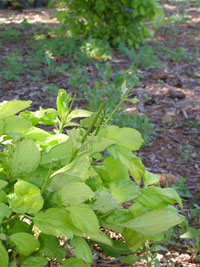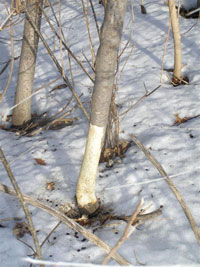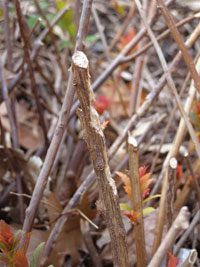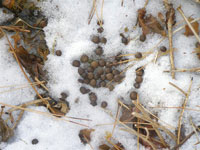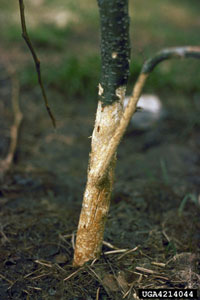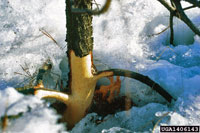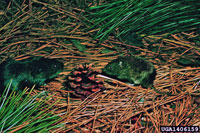Extension > Garden > Diagnose a problem > What's wrong with my plant? > Deciduous Trees > Willow > Bark chewed, removed or missing
Willow > Trunk/Branches > Bark chewed, removed or missing
1 of 4
Sapwood rot
Schizophyllum commune, Cerenna unicolor, Trametes versicolor
- Dead branches within the canopy
- Yellowing to brown leaves may be present
- Groups or rows of small (
- Schizophyllum shelf fungi are white and appear fuzzy on top
- Cerrena fungi are white to greenish grey and have concentric rings on the surface
- Trametes shelf fungi are tan to brown with darker rings
- Wood below fungal shelves is yellowish to white, spongy, crumbly and decayed
- Bark around fungal shelves is killed and often falls off
- Common on trees stressed by drought, winter injury, wounds, mechanical injury or other factors
- More information on Heart rot
2 of 4
Deer feeding/antler rubbing
- Long lines of shredded or peeled off bark along main trunk up to 3 feet off the ground from antler rubbing; wood may appear shiny or "polished"
- Leaves and small branches
- Feeding occurs from the ground up to 6 feet or slightly higher; ragged edges, same as above; if the bark is removed by a deer there will be no teeth marks
- More information on Problems with deer
3 of 4
Rabbit feeding
- Bark is completely removed from the main trunk, only young trees are damaged
- Regular scraping the size of a spoon tip can be seen in the wood
- Damage can occur from ground level to several feet up the trunk depending on the depth of winter snow
- Small twigs are cleanly cut off with a sharp edge, at a 45 degree angle
- Majority of bark feeding occurs in winter and early spring
- Rabbit droppings (small, round pellets) are often found near the damaged shrubs
- More information on protecting trees and shrubs from animals
4 of 4
Vole feeding
Microtus spp. and Phenacomys spp.
- On young trees, bark is completely removed from the main trunk in irregular patches
- Scraping the size of fork tines can be seen in exposed wood
- Damage occurs during winter from the ground level up to winter snow depth
- Trees and shrubs appear to "die suddenly" during the growing season, especially if they experience any drought stress



